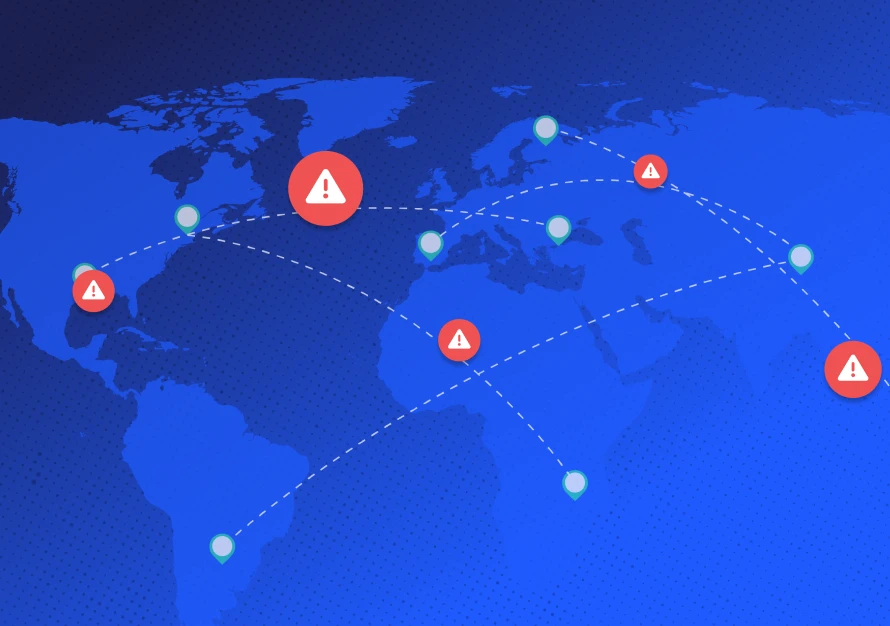Last month, the world was introduced to yet another coronavirus variant: Omicron. The Omicron variant—first discovered in South Africa—was quickly labeled by the World Health Organization as a “variant of concern,” adding that it’s likely to spread further and could potentially become a “very high” global risk. Although, it is still too early to make any conclusions, initial data finds that this variant is much milder than previous ones as hospitalizations remain low.
The announcement of the Omicron variant put countries in a whirlwind and is yet another test for already-stressed global supply chains.
COVID’s impact on supply chains
Since the start of the pandemic, supply chains have been greatly affected. When initial shutdowns took place, ports also closed, and factories came to a halt. Employees were laid off or furloughed due to suspended operations and almost every industry was backlogged.
But with COVID restrictions easing earlier this year due to developed vaccines, ports began to open, and business started to recover. With Omicron making waves around the world, it can throw a wrench in the works on supply chain recovery and, ultimately, pose a threat to regional exports recovery.
A global response
Countries quickly began planning for new or additional lockdowns and enforcing strict travel restrictions. For example, China is expected to double down on its ‘zero-COVID’ policy, which has included mass lockdowns of entire cities, enforced quarantines, as well strict checks at ports to prevent cases from entering. If this does happen, shipping will be constrained and we could see yet more shortages of key manufacturing components and extended order backlogs for electronic, automotive and consumer products.
Seven of the world’s top 10 busiest ports are located in China, according to data from the World Shipping Council. And the first nine most popular ports are in Asia. If Omicron hits supply chains, the impact on Asia’s gross domestic product is likely to be a fall of 1.6 percentage points for next year, according to Oxford Economics.
Already, more than 56 countries have reimposed varying degrees of travel restrictions, frustrating global transport workers. Australia, who enforced strict lockdowns at the start of the pandemic, has reported cases and will temporarily halt the next stage of its plan to reopen borders while more information is gathered on the Omicron variant.
How to protect your supply chain
Just like any disaster, companies need to take precautionary measures to ensure business continuity during the fallout. Supply chain management should include a comprehensive plan to how to respond to disruptions like the COVID-19 pandemic. Businesses should first establish a conducive business continuity plan (BCP) and then determine the degree of organizational preparedness to deal with something of this magnitude.
Ways they can do this are:
- Reviewing company policies on communicable diseases
- Monitoring internal and external communication measures
- Conducting thorough online and off-line training and simulation drills

.svg)

.svg)
.svg)

.svg)

.svg)








